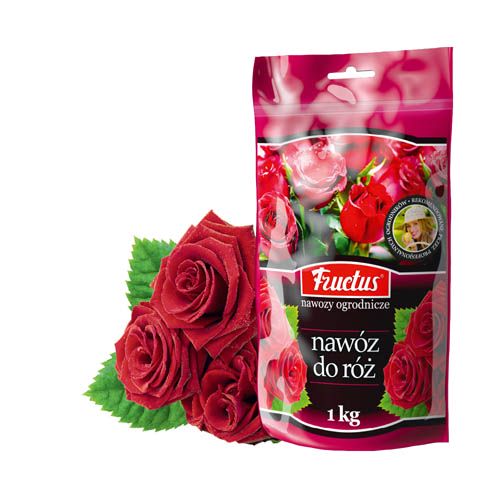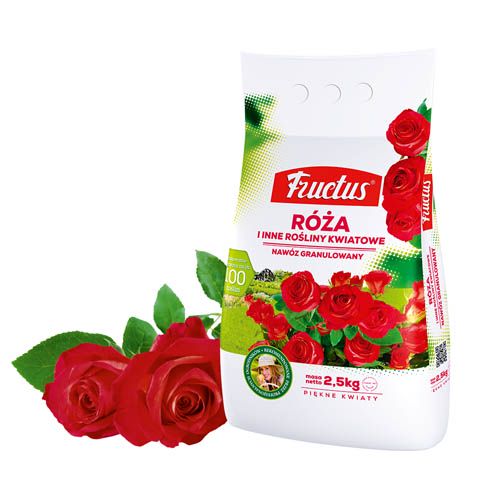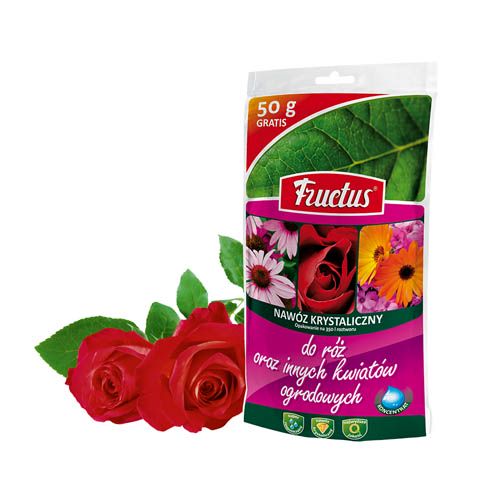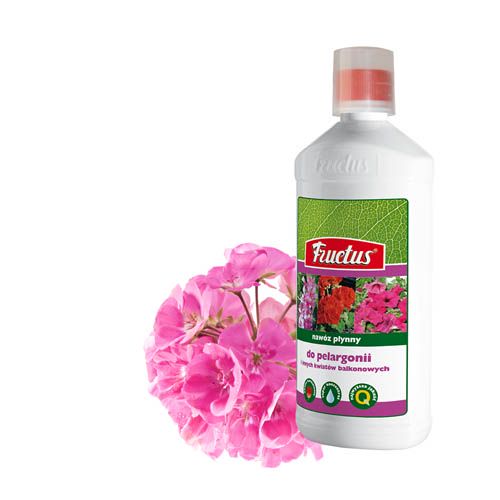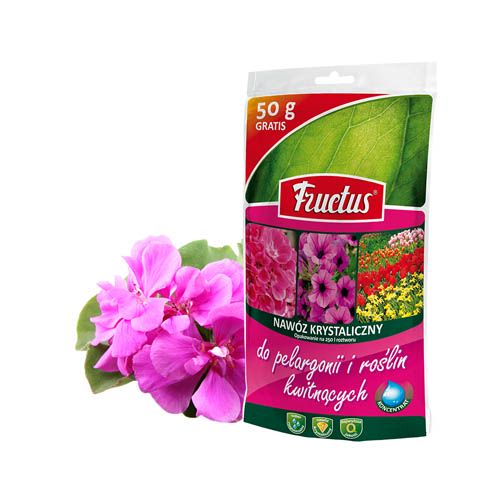Advice
Flowering plants
Flowering plants grown in our gardens, balconies and at home are different. Often they are distant in terms of botanical plant groups that have different requirements for habitat, care and fertilization. Despite these differences some elements of care for their beautiful appearance and proper health condition are common to all species we cultivate.
more
PLANT SELECTION
When buying seeds and bulbs we should pay attention to the expiry date – purchase of material with binding expiry date for sowing or planting should ensure adequate vitality of plants. When buying plants already growing, we need to pay a special attention to their habit, number of branches, number of buds, appropriate color for the particular plant, lack of damage and discoloration that might suggest an infection by diseases or pests. It is worth using proven sources of supply.
SUBSTRATE PREPARATION
One of the most important elements of substrate preparation is to obtain a pH reaction applicable to the particular plant or group of plants. The diversity of requirements with regards to pH can be quite large [from acidic (below pH 5.5) to slightly alkaline (approx. pH 7)], and therefore it proves necessary to take an individual approach to each of the species we cultivate. Changing the pH reaction during the vegetation is difficult to obtain and also gives the plants an additional unnecessary stress.
The substrate should provide the plants with adequate access to moisture and air (root breathing), so it cannot be either too brief or too loose. An important factor in retaining the appropriate structure of the soil (when growing in the ground) is to provide the right amount of organic matter in the form of e.g. manure, compost or finished formulations. In the case of growing plants in containers it is worth using ready-made, adequately composed substrates.
SOWING AND PLANTING
The greater part of the seeds offered by vendors is ready for sowing without any special treatment. Often, seeds are treated with chemical substances that protect against diseases and pests, which provides the plants with the right conditions for growth and development in the initial period. Keep in mind that seeds of species susceptible to frosts should be sown into the soil relatively late, e.g. around mid-May, so that their emergence falls after the last spring frost (“cold gardeners”). Seeds of frost resistant species can be sown much earlier, already at the turn of March and April. We protect bulbs planted in the ground from frost by covering them at the time of the arrival of cold weather with appropriate bedding (straw, leaves, peat, etc.).
In the case of already growing plants available in stores in containers, pots, etc. it is relatively simple. The date of planting this type of plants does not matter so much, provided that it falls during the vegetation period, after the end of the spring cold weather. We remove the purchased plants from the containers, we check the root ball and if there are rotten parts, disease damages to the roots we remove them by using a knife or gardening pruning shears. Subsequently, we plant the plants directly into the ground or a larger container depending on our development plans of the garden or, for example, a balcony. An important element is the density of sowing or planting, which should take into account the size of full-grown plants.
MINERAL FERTILIZATION
The proper development of flowering plants is determined primarily by correct supply of all necessary macro- and micronutrients. A properly carried fertilization will allow the plant to remain in a good health, which in the case of ornamental plants is extremely important. For fertilization of ornamental plants particularly complex chloride-free fertilizers such as Fructus Gardener, Fructus Rose and Fructus fertilizer for flowers are recommended.
CARE
An adequate supply of water is a necessary condition for the proper functioning of plants. During watering the following must be, therefore, taken into account:
- plant quality requirements and its development phase – a fully developed plant, only because of its size (larger transpiring surface), needs more water than a seedling;
- type of soil – plants growing on loose substrates with low water capacity should be watered more often than plants growing on concise substrates;
- the amount of rainfall – in the case of crops on an exposed area. Most plants require medium damp substrate that provides concurrently access of soil air to plant roots.
Pests often occurring on plants are: aphids, spider mites, thrips, whiteflies, larvae and caterpillars of butterflies. In the case of diseases the main pathogens are fungi causing various diseases.
The most common diseases are:
- gray mold– a widespread mushroom disease manifested by a graycoatingon the infectedplant organs;
- Fusarium– a frequent symptom of its occurrence areyellowingand subsequently dyingtops and then later of the whole leaves. In the case ofbulbous plants the disease is largelytransferred togetherwith bulbs, therefore,theseed treatmentprior to planting with a suitablefungicide is a very importanttreatment ,
- powdery mildew-a characteristicsymptomof the diseaseis the appearance ofpowdery growthon the above-groundparts of the plant inthe initial phase;
- BlackSpot ofRoses– it is manifested by the appearance ofnecroticblack spots.The disease causesacceleratedleaf fall, thereby weakensthe plant andmakesit notfullyprepared forwinter conditions.
An effective way to protect the plants we cultivate against diseases and pests is the use of appropriate pesticides. It is important to definitely follow the instructions of use of the preparations, especially, the grace periods and prevention.
An important factor influencing plant health is the use of so-called sanitary cutting – it involves the removal of plant parts at a time when they were attacked by a disease or pest to the extent preventing their recovery. After plant flowering, the flower stems should also be removed, so that the plants do not create unnecessary fruit and seeds. At the end we distinguish also so-called corrective cutting that allows the formation of bush or tree crowns according to our wishes.
ROSE CARE RECOMMENDATIONS:
Fructus for roses and other garden flowers
Fructus for roses and other garden flowers
SHOW ALL PRODUCTS FOR FERTILIZATION OF FLOWERING PLANTS
- Fructus Nawóz do róż (Fructus fertilizer for roses) – granules
- Fructus RÓŻA I INNE ROŚLINY KWIATOWE (Fructus ROSE AND OTHER FLOWERING PLANTS) – granules
- Fructus Nawóz do rododendronów i azalii (Fructus fertilizer for rhododendrons and azaleas) – granules
- Fructus Nawóz do kwiatów (Fructus fertilizer for flowers) – granules
- Fructus do pelargonii i roślin kwitnących (Fructus for pelargoniums and flowering plants) – crystalline
- Fructus do kwiatów balkonowych i tarasowych (Fructus for balcony and patio flowers) – crystalline
- Fructus do róż oraz innych kwiatów ogrodowych (Fructus for roses and other garden flowers) – crystalline
- Fructus do surfinii, petunii i werben (Fructus for surfinia, petunia and Werben) – crystalline
- Fructus do roślin kwitnących (Fructus for flowering plants) – liquid
- Fructus do pelargonii i innych kwiatów balkonowych (Fructus for pelargoniums and other balcony flowers) – liquid
- Fructus do storczyków (Fructus for orchids) – liquid
- Fructus do datury (Fructus for datura) – liquid
- Fructus DO ROŚLIN DOMOWYCH jesienno-zimowy (Fructus FOR DOMESTIC PLANTS Autumn-Winter) – liquid




